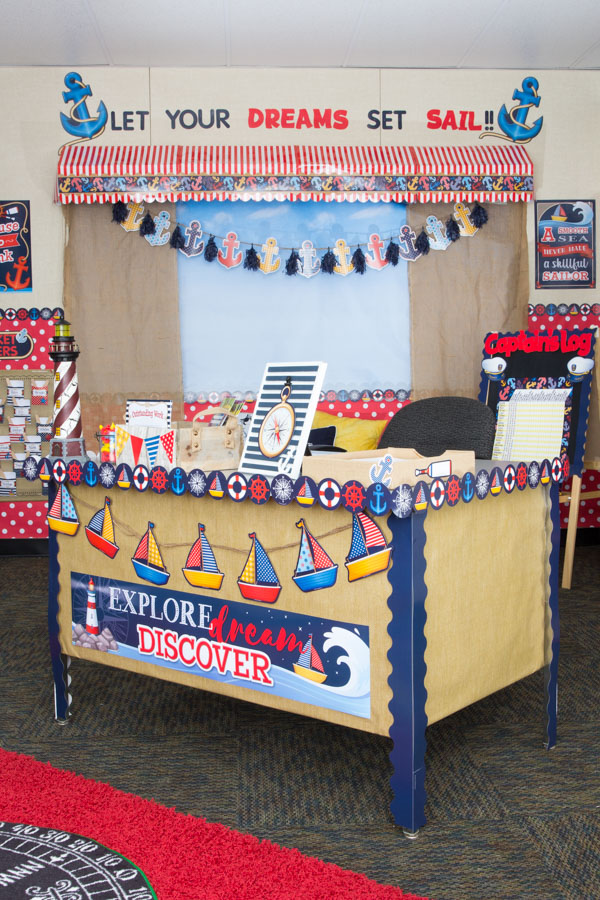Introduction to Nautical Classroom Decor
As an educator, I’ve always believed that a well-decorated classroom can significantly impact students’ engagement and learning outcomes. Nautical classroom decor, characterized by its coastal themes, oceanic colors, and maritime elements, can evoke a sense of adventure and curiosity in learners. In this article, we will explore the various ways to implement nautical decor in your classroom, share personal insights, and examine the benefits and challenges associated with this style.
The Appeal of Nautical Themes in Education
Nautical themes often evoke feelings of calmness and inspiration, making them perfect for a learning environment. The colors blue and white—reminiscent of the sea and sky—can create a serene atmosphere conducive to learning. Additionally, incorporating elements such as anchors, ropes, and marine life can stimulate curiosity and discussions among students.
Key Elements of Nautical Classroom Decor
1. Color Palette
The color palette is the foundation of any decor style. For nautical themes, consider the following colors:
- Deep navy blue
- Bright white
- Soft creams
- Sunny yellows
- Vibrant coral or red
2. Nautical Symbols and Imagery
Incorporate images and symbols such as:
- Anchors
- Ropes and knots
- Starfish and seashells
- Ships and sailboats
- Maps and compasses
3. Textures and Materials
Using natural materials can enhance the nautical feel. Consider:
- Wooden furniture (like weathered wood)
- Cotton and linen fabrics for curtains and cushions
- Rope accents for bulletin boards or as decorative elements
How to Create Nautical Decor in Your Classroom
Step-by-Step Guide
Here’s how I transformed my classroom into a nautical paradise:
- Choose a Color Scheme: Start with a blue and white color scheme as your base.
- Select Nautical Decor Items: Look for items like anchor wall art, rope bulletin boards, and marine-themed posters.
- Incorporate Functional Decor: Use storage crates painted in nautical colors for books and supplies.
- Add Personal Touches: Include class projects inspired by marine life or ocean adventures.
- Engage Students: Let students contribute ideas or decor items to foster ownership of the space.
Pros and Cons of Nautical Classroom Decor
| Pros | Cons |
|---|---|
| Promotes creativity and curiosity | Can be costly to implement fully |
| Creates a calming atmosphere | May not suit all educational themes or subjects |
| Encourages collaboration through shared decor elements | Requires maintenance to keep elements fresh and engaging |

Creative Ideas for Nautical Classroom Decor
DIY Projects
Engaging students in DIY projects can be both fun and educational. Here are a few ideas:
- DIY Nautical Wall Art: Create artwork using canvas, paint, and stencils to depict marine themes.
- Rope Bulletin Board: Use a piece of plywood covered in burlap and wrap it with rope to create a unique bulletin board.
- Seashell Collection: Encourage students to collect seashells and create a display in the classroom.
Incorporating Technology
Use technology to further enhance the nautical theme:
- Create digital presentations on marine life or ocean conservation.
- Utilize virtual reality to explore underwater environments.
- Incorporate interactive quizzes about nautical themes using online tools.
Comparing Nautical Decor to Other Themes
When considering nautical decor, it’s helpful to compare it with other popular classroom themes:
| Theme | Nautical | Nature | Space |
|---|---|---|---|
| Color Palette | Blues, whites | Greens, browns | Blacks, silvers, blues |
| Engagement Potential | High | Medium | High |
| DIY Projects | Very High | High | Medium |

Inspiring Examples of Nautical Classroom Decor
Here are a few inspiring examples of nautical classrooms that I’ve come across:
- Anchor Chart Wall: A wall of anchor charts adorned with student-created artwork.
- Ocean-Themed Reading Nook: A cozy corner with beach-themed cushions and a curated marine library.
- Interactive Marine Map: A large wall map where students can pin their favorite marine parks globally.
FAQs About Nautical Classroom Decor
1. What materials are best for nautical classroom decor?
Natural materials such as wood, burlap, and cotton fabrics work best for a nautical theme. They evoke a coastal feel while being functional and durable.
2. How can I keep the nautical decor budget-friendly?
Utilize DIY projects, thrift store finds, or upcycling items you already have. This approach not only saves money but also adds a personal touch to your classroom.
3. Can nautical decor work for all age groups?
Absolutely! Nautical themes can be adapted for any grade level by adjusting the complexity of the decor and the associated activities.
4. How can I involve my students in the decor process?
Encourage students to participate in decisions about decor items and themes or have them create their own art for display, fostering a sense of ownership in the classroom environment.
5. Is nautical decor suitable for subjects outside of science?
Yes! Nautical decor can enhance subjects like language arts through maritime literature or history through exploration themes.
